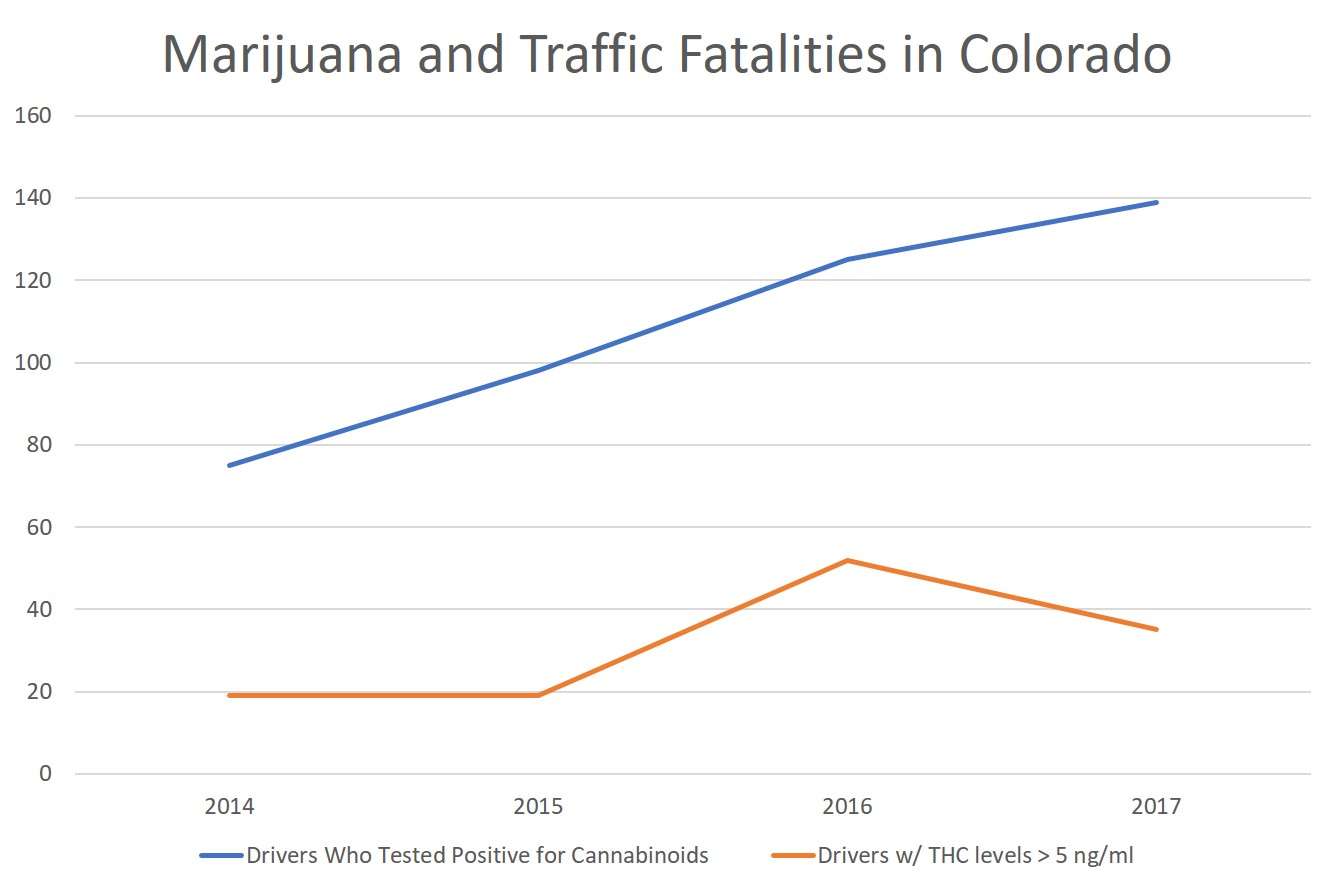'Cannabis-Involved' Traffic Fatalities Fall in Colorado
The figure refers to crashes in which a driver exceeded the threshold at which state law presumes impairment.
The number of traffic deaths involving drivers who tested positive for marijuana rose by 11 percent last year in Colorado, while the number of "cannabis-involved fatalities" fell by 33 percent. The divergence between those two trends illustrates the difficulty of ascribing crashes to marijuana intoxication, which complicates the question of how legalization has affected road safety in Colorado, the state with the longest history of state-licensed recreational sales.

According to a new report from the Colorado Department of Transportation (CDOT), the number of fatal crashes in which a driver tested positive for cannabinoids rose from 75 in 2014, when legal recreational sales began, to 98 in 2015, 125 in 2016, and 139 last year. But as CDOT notes, "The presence of a cannabinoid does not necessarily indicate recent use of marijuana or impairment." In light of that limitation, CDOT since 2014 also has reported the number fatalities in crashes where a driver's THC blood concentration was five nanogams per milliliter or more, which is the level at which state law allows juries to presume impairment. That number, which CDOT calls "cannabis-involved fatalities," was 19 in 2014 and 2015, then rose to 52 in 2016 before falling to 35 last year.
While the narrower measure gets closer to the issue of concern, many regular cannabis consumers are perfectly capable of safely operating a motor vehicle at five nanograms. More generally, there is little scientific basis for defining marijuana impairment based on THC blood levels. "Whereas the impairment effects for various concentration levels of alcohol in the blood or breath are well understood," the National Highway Traffic Safety Administration notes, "there is little evidence available to link concentrations of other drugs to driver performance." Hence "specific drug concentration levels cannot be reliably equated with a specific degree of driver impairment." Or as the AAA Foundation for Traffic Safety put it in a 2016 report, "a quantitative threshold for per se laws for THC following cannabis use cannot be scientifically supported."
The upshot is that, just as "marijuana-related" crashes (where a driver has consumed cannabis at some point, possible days or even weeks earlier) may be unrelated to marijuana, "cannabis-involved" crashes (where a driver tests at or above five nanograms) may not involve cannabis in any causal sense. That uncertainty makes it hard to say whether legalization has led to a surge in dangerously stoned drivers.
Another complication is the potential substitution of marijuana for alcohol, which has a much more dramatic impact on driving ability. If an increase in stoned drivers were accompanied by a decrease in drunk drivers, the result could be a net decrease in traffic fatalities. So far that does not seem to be happening in Colorado, where traffic fatalities involving drivers who had blood alcohol concentrations of 0.08 percent or more (the legal cutoff for driving under the influence) rose from 160 in 2014 to 171 last year, a period when total fatalities rose from 488 to 648.
Can that overall increase be pinned on marijuana legalization? Probably not, since traffic deaths have been rising nationwide in recent years, and they began rising in Colorado before legalization took effect.


Show Comments (10)